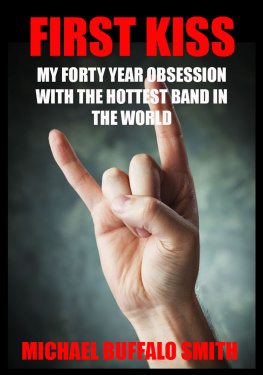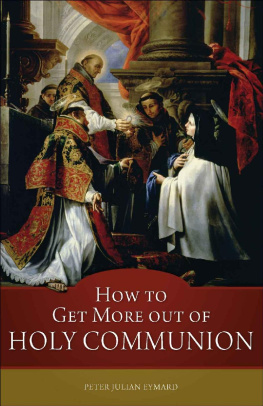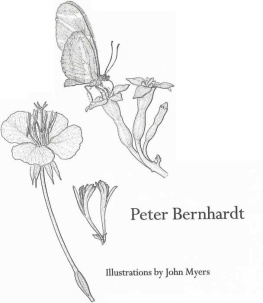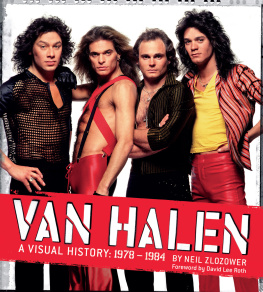

A detailed exploration of the 1978 KISS solo albums
By Julian Gill
Copyright 2015 by Julian Gill & Tim McPhate
Cover artwork & interior section elements 2015 by Nils Brekke Svensson
Physical ISBN-10: 0-9822537-6-1
Physical ISBN-13: 978-0-9822537-6-2
Digital Revision 6
All rights reserved. No part of this book may be reproduced or transmitted in any form or by any means, electronic or mechanical, including photocopying, recording, or by any information storage and retrieval system, without explicit permission in writing from the copyright owner. Scans/photographs of artwork and/or items of collector's interest are provided for illustrative and/or critical purposes only. No claim over the copyright of any of the original artwork or designs, or any quoted works and lyric excerpts, is made.
"Never have all the members of an ongoing rock 'n' roll band released their own albums simultaneously. Never have the members of a band taken a touring break specifically to grant each one the time to develop his own individual statement... KISS is more than a rock 'n' roll band. KISS is an institution, and to its fans, inspiration. The albums were done to prove that there is a place in a group for its members' unique temperaments to be expressed, without altering that group's inner harmony. When the KISS members decided to create their own albums, they contacted many friends and colleagues outside the band to play at the sessions" (PR).
In memory of Neil Bogart, William M. Aucoin and Sean Delaney: Visionaries, dreamers and believers in the impossible, without whom...
Editor's note: The editing of the interviews comprising this work has been approached with a desire to leave the original intent and "voice" of the interviewee intact, even at the cost of correct grammar . Except in the most egregious cases, a bare minimum of correction has been done, and in some cases the ubiquitous [sic] has been inserted, out of respect to what are in essence transcriptions of conversations converted into a more readable form. Hopefully, the unique character of each interviewee's "voice" is preserved, and won't cause too much reader discomfort! Please also consider that one person conducted and transcribed the vast majority of these interviews, and another is taking on the task of editing the work. Therefore, only the former would recall the nuances only present in the original tone of the conversation. Tpyos, now they're a different matter...
http://www.kiss78soloalbums.com/
Contents

(Billboard Magazine ad, Sept. 9, 1978)
Introduction
September 18, 1978. KISS made music history when they simultaneously released the member's four solo albums. The albums were backed by an unprecedented, multimillion dollar marketing and publicity campaign, and a total of more than 5.3 million units were shipped to retailers, creating KISSteria and representing perhaps one of the last examples of record industry excess in the '70s. "Gene, Ace, Peter & Paul: A Detailed Exploration of the 1978 KISS Solo Albums" is based in large part on a 2013 KISSFAQ.com celebratory retrospective that commemorated the 35th anniversary of the solo albums. That "Back in the Solo Album Groove: The KISS Albums. 35 Years Later..." project was an ambitious multi-week retrospective dedicated to arguably one of the biggest milestones in KISStory.
"Everybody's grown tremendously with their albums. And the really nice thing about it is that when the albums [are] all done, [and] each of us hears the other, it's really a great way of saying, 'Hey, this is what I'm about. This is the way I've always heard things.' It's like really getting to know somebody even better than you do." Paul Stanley, 1978
By 1978 KISS had transformed from simply a rock band into a cultural phenomenon. Gene Simmons, Ace Frehley, Peter Criss and Paul Stanley had just completed their busiest year to date in 1977: a 12-month cycle that yielded the "Love Gun" studio album, "Alive II" and an intensive touring itinerary including the band's first tour of Japan. Under the direction of manager Bill Aucoin, what followed was a year that firmly established and took "Super KISS" over the top, cementing their status as an American cultural icon. Following the conclusion of the "Alive II" tour, Casablanca Records released the first proper KISS greatest hits package, "Double Platinum," in April 1978. The band then embarked on the filming of "KISS Meets the Phantom of the Park," a made-for-television movie that premiered on NBC television in October. Meanwhile, the flood of KISS merchandise from belt buckles, sleeping bags, makeup kits, and dolls became a tidal inundation of retail outlets nationwide. KISS was everywhere. The transformation into a brand was fully underway.
The solo albums presented the KISS members like fans had never heard them before. Simmons called on a cavalcade of stars to round out his LP, from artists such as Donna Summer and Helen Reddy to Aerosmith's Joe Perry and Cheap Trick's Rick Nielsen. Containing an impressive breadth of material, the album spanned Beatles-inspired tunes, lushly orchestrated ballads and electrifying rock tracks, with a touching cover of the Disney classic "When You Wish Upon A Star" thrown in for good measure. For his solo album, Frehley teamed with renowned producer/engineer Eddie Kramer, who was fresh from spearheading the band's last two studio albums and "Alive II." With only two lead vocals to his credit at that point, Frehley's album was arguably considered the wildcard of the bunch. But with an armory of guitars and amps, a bolt of confidence and drummer Anton Fig in tow, the Spaceman had an ace up his sleeve.
Meanwhile, Criss fulfilled his musical dreams by presenting a song cycle reflecting his diverse interests, from R&B and old-time rock and roll to delicate ballads and even a disco-flavored tune which pre-dated the 1979 hit "I Was Made For Lovin' You." The Catman was aided by an A-list of studio musicians and the talents of KISS creative guru Sean Delaney and Grammy-winning producer/songwriter Vini Poncia. Stanley expanded his creative horizons, mixing straight-ahead KISS-inspired numbers with dynamic tracks that showcased his impressive vocal range, including his first-ever performed ballad. The Starchild tapped an able group of musicians, including guitarist Bob Kulick, who had ghosted guitar tracks on the studio side of "Alive II." In a sense, Stanley's album ultimately defined a model for his future output within KISS.
Nearly 4 decades later, "Gene, Ace, Peter & Paul: A Detailed Exploration of the 1978 KISS Solo Albums" puts the four KISS solo albums under the microscope like never before. More than 30 brand-new interviews were conducted with various individuals who either worked directly on the solo albums or have a strong connection with the projects. These interviews offer readers fresh first-hand perspectives straight from studio musicians, producers, engineers, and songwriters, and the creative professionals working in the KISS camp at the time.
A supporting series of topical features further illuminates KISS' activities in 1978 while dissecting the albums and offering in-depth analysis and biographical information on the albums' participants.
There is only one way to conclude any introduction to this work...
To: Gene, Ace, Peter & Paul
Solo Albums Overview
















